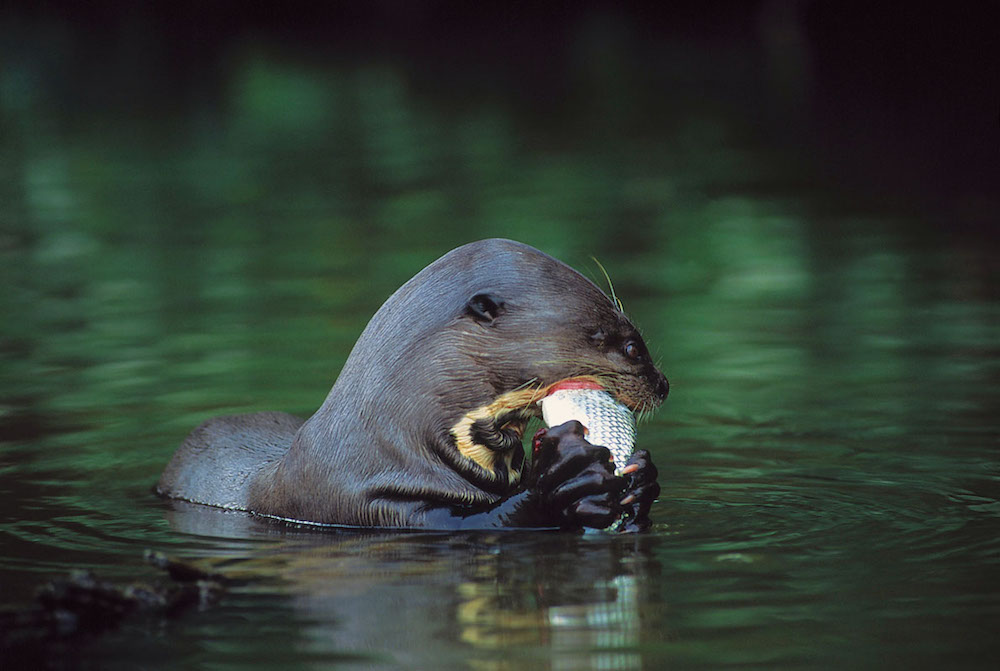Giant otters in Peru

Illegal gold mining and deforestation are endangering wild otters. Our team of experts are saving them.
Giant otters, endangered top predators which live in Amazon river ecosystems, were nearly wiped out because of demand for their fur. Following the banning of fur trade, giant otter numbers have recovered across South America. However, there are several emerging threats to this sensitive species.
The problem
Illegal gold mining activities and deforestation are severely affecting the habitat of giant otters in the Peruvian amazon. The full extent of these human threats on giant otters are’nt well understood yet. When mining and deforestation occur in an area, the otters can be directly affected because the river banks they live on and depend on can be badly destroyed. Other indirect impacts are also likely to harm them. There are usually less fish to feed on, and harmful contaminants such as mercury are flushed into the river. Mercury can accumulate in the fish the otters feed on, and the consequences could be disastrous.
The solution
We’ve teamed up with Adi Barocas in Peru, to understand what’s happening and what we can do to reverse the fortunes of this fantastic, charismatic species. The mission of the giant otter research team is to understand if and how the demography, behaviour and health of giant otters are affected by the recent changes to their habitat. The team’s studying several giant otter family groups both in a protected area, within Manu National Park, and areas outside the park that are subject to different degrees of mining activities. They’re also sampling and testing otter faeces to see what level of contamination there is in the fish they rely on. An important component of this project is the involvement and engagement of local indigenous communities in conservation efforts.
Updates
Supporting local ecotourism initiatives to advance Amazon lake conservation efforts
By Adi Barocas
The Peru giant otter project has established a collaboration with the indigenous community of Isla de los Valles, which is strategically placed at the gates of Manu National Park. Recently, on our way to the park, one of our main giant otter study areas, we visited the community and attended its weekly assembly meeting. We seized the opportunity to present the community leaders with a pair of newly purchased binoculars and a Birds of Peru guide. We instructed members of the community’s tourism committee on how to properly use and conserve these items, so that they can improve the experience of visitors to the nearby oxbow lake.
The Isla de los Valles community, composed of people from both Matsigenka and Yine ethnicities, has recently decided to set aside 3300 hectares of its land bordering Manu National Park for nature tourism and protection. Prior to this, the lake, the first of two dozen oxbows flanking the Manu River, did not have protected status and was frequented by loggers and hunters. The tourism operation currently includes a wooden catamaran and charges a small fee for visitors. We will participate by helping monitor the resident giant otter group and the bird community within the lake. We hope this is the start of a fruitful collaboration. We see the involvement with local communities as a vital part of the giant otter project’s mission of promoting conservation of Amazon oxbow lake ecosystems.
